Gustavsberg is a lovely little town in Värmdö municipality in Stockholm, best known for the Gustavsberg porcelain factory. We took a map-based walk along the waterfront and discovered everything from factory history to castles and mansions.
Table of contents
Gustavsberg in Värmdö municipality
We visited Värmdö municipality when we tested the municipality's new cultural trail Pilhamn, located on the island of Ingarö. The cultural trail was nice and interesting but only 1.7 kilometres long, so we had time and energy for more "discovery". We then chose to go to the municipality's central town Gustavsberg and follow one of the municipality's ready-made "walks".

Gustavsberg is located in Värmdö municipality, 22 kilometres east of central Stockholm. The town is located at the far end of Farstaviken, on the western part of Värmdön.
City walk in Gustavsberg
On Värmdö municipality's website we found information about "Recreational trails and hiking paths" and on that page you could download a pdf with "Three walks in Gustavsberg - through history, nature and culture". Fun with a little culture and history as a change to all the nature experiences, we thought!

We chose the walk called "Fabriksområdet and Farsta", which focuses on the history of the porcelain factory and the Farsta neighbourhood, where you can find several beautiful manor houses.

Gustavsberg church
Gustavsberg church is not on this particular walk, but we saw it in the distance. The church is built in neo-Gothic style and was inaugurated in 1907, five years after Gustavsberg became its own parish. In the foreground you can see a nice houseboat lying along the quay.
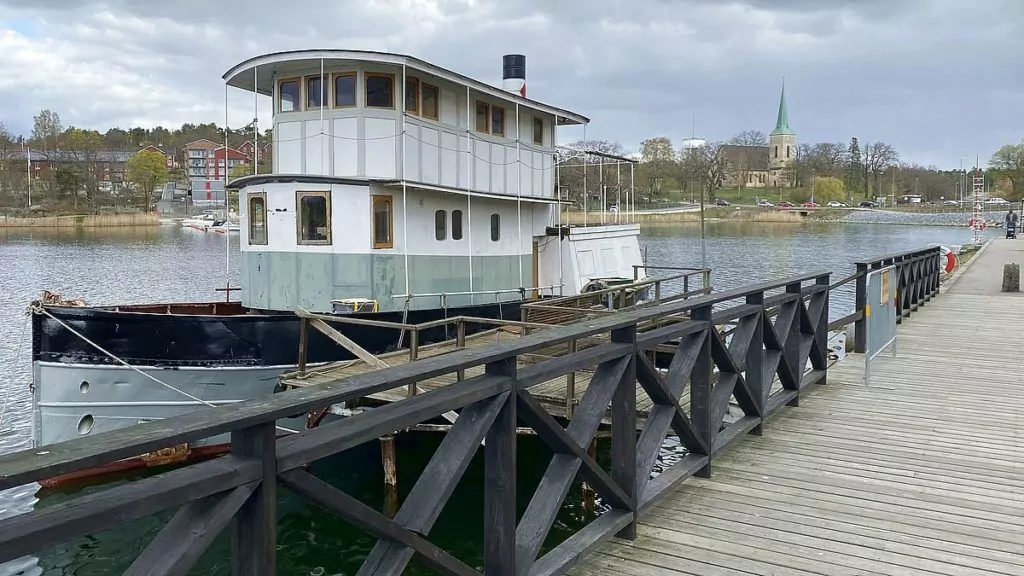
World House and Stone House
The walk starts at the Värdshuset and Stenhuset. The inn was completed in 1882 and served as an inn and clubhouse for the "Gustavsberg Workers' Club". The factory management thought that the workers drank too much alcohol, and therefore wanted a clubhouse with alternative activities.

The Stone House is a residential barracks for factory workers from 1857. At the time, the house contained 32 single rooms with a stove.

The factory area in Gustavsberg
The walk then continues along the waterfront, past the factory area in Gustavsberg. Many different buildings are marked on the map, but it is not easy to understand which building is which from the map. You pass by:
- Old mud house - This is where the long process of mixing porcelain paste started. Mills and machines were driven by steam power.
- The old workshop - Here the porcelain mass was transformed into objects. Craftsmen turned or pressed the mass against plaster moulds.
- Drying house - The former Torkuset now houses the Gustavsberg Porcelain Museum. In the past, the porcelain was dried here before firing. Midsummer was celebrated every year in front of the house.
- The furnace house - Originally there were even more kilns, and now a house from 1853 remains. The kilns were packed full of porcelain in a process that was both difficult and risky.
- Yellow building - This first office building was completed in 1826, the same year the factory was founded. It has also housed apartments and a hall that served as a church hall.
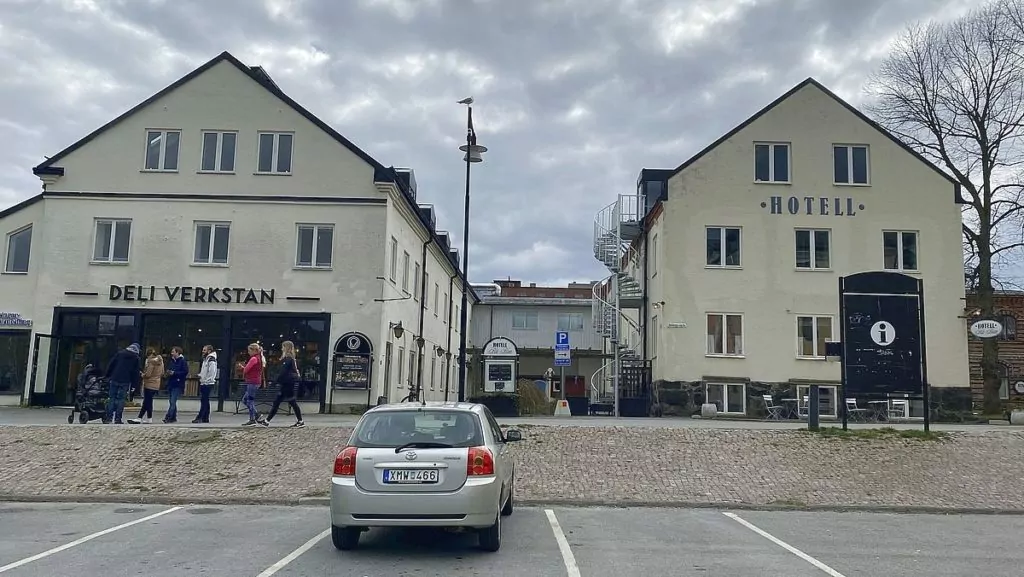


In the pictures above you can see, among other things, the "Yellow Building". The first picture below shows the beautiful Drying House.

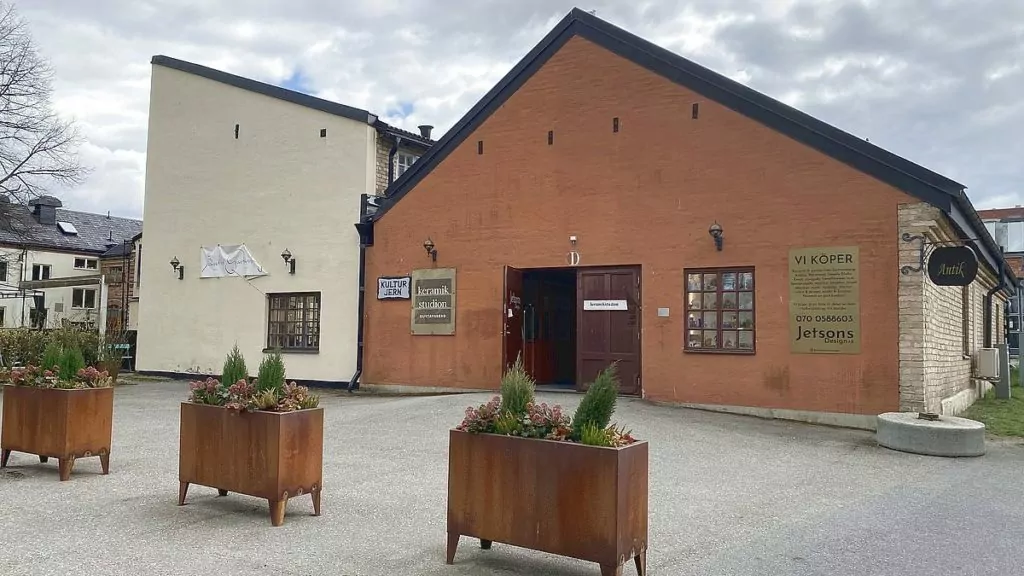
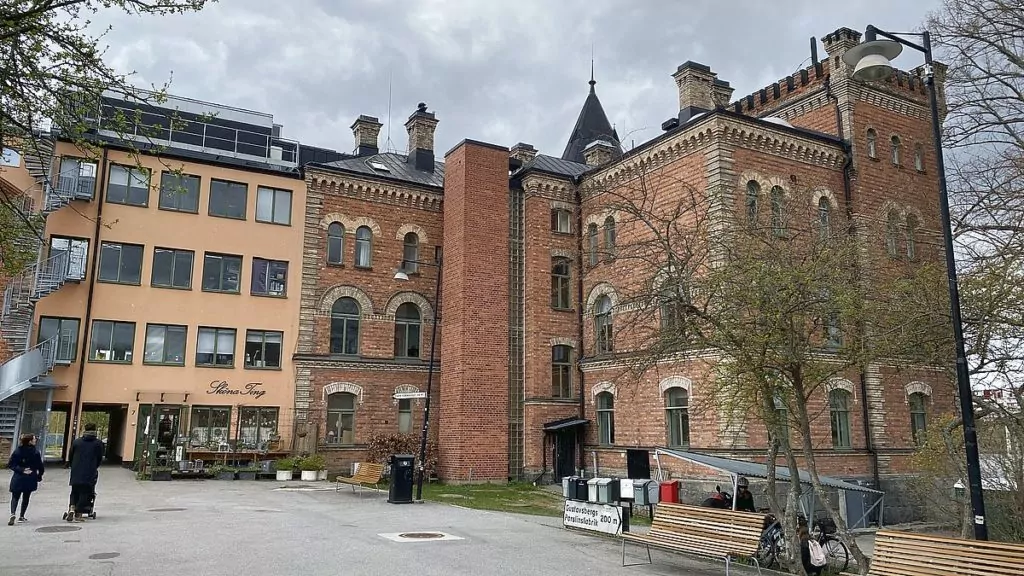
Odelberg's sculpture
The next stop is the Odelberg sculpture by Carl Milles. Mill owner Wilhelm Odelberg ran the factory and the community from 1869 to 1924. In 1900, he had around 800 employees, all of whom were provided with housing, medical care, pensions and child allowances and schooling for their children.

Headquarters - Tornhuset
The Tower House is a grand, medieval-inspired building. The ground floor once housed the customs office, post office and waiting room for boat travellers.
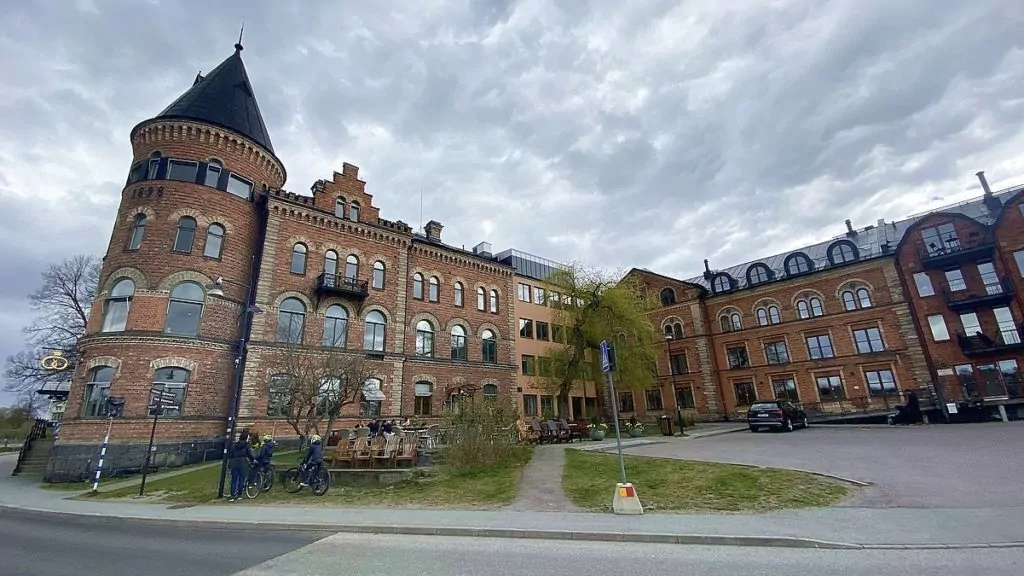
Kattholmen power station
The power station at Kattholmen was opened in 1905. It had two large steam turbines that were used to provide electricity to all the factory's machines. In 1921, the power station was closed down and the factory was connected to the Älvkarleby electricity grid.

Farstavik
As you continue your walk through Gustavsberg to the area called Farsta, you encounter several beautiful buildings. First you come to Farstavik. Samuel Godenius, who was a mill owner from 1852 to 1869, gave the house to his daughter Hilma when she married the future mill owner Wilhelm Odelberg in 1869.

Farstaudde
Right next door is Farstaudde. Mill owner Wilhelm Odelberg had the house built in 1911 for his daughter Maria Bennich, who had been widowed with several children. The magnificent villa is beautifully situated, but it didn't feel like you could get that close.

Farsta Castle
The most magnificent building in the area is Farsta Castle, which belonged to the nobility in the 17th century. When Maria De la Gardie became the widow of Gustaf Gabriel Oxenstierna, she renamed the property Gustafsberg after her husband. This then became the name of the town! The castle was rebuilt in the 18th and 19th centuries.

English Park
At the turn of the 18th and 19th centuries, English parks were in vogue, and they didn't want to be inferior here. The mighty oak forest in the park is really nice.
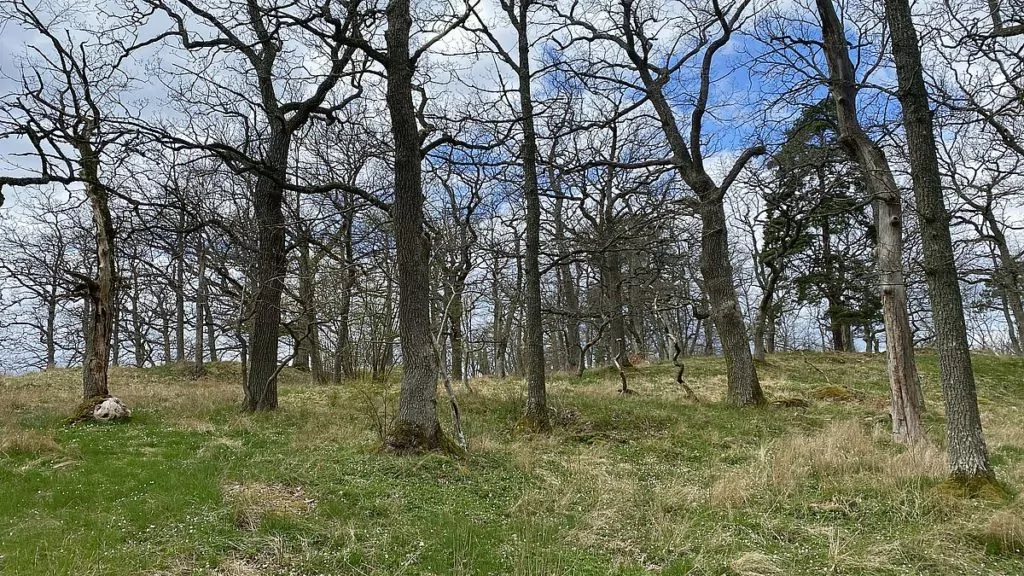
Iron Age settlement
After the English Park, the walk goes back towards the centre of Gustavsberg, but now a bit above the water. You first pass an Iron Age settlement, where the original Farsta farm was located 1000 years ago.
Stables
You then pass the stables, built in 1888, which housed horses and oxen used to transport porcelain.

Porcelain factories
At the end of the walk you come back to the porcelain factory, but now you pass other buildings. Now you pass by:
- The hall of measurement - Here, painters sat in long rows and painted or decorated porcelain.
- The house of Kåge - In this house, they developed new tableware and experimented with artefacts.
- The boiler centre - Heating centre from 1940.
- Sanitary porcelain factory - A remnant of the 1939 factory, then the most modern in the world.
- Household china factory - In the 1940s, the Cooperative Union invested heavily in this modern factory.

The water wheel
Outside the porcelain factory is a water wheel from 1894. This was the factory's first source of energy. With the advent of the steam engine, it was replaced by water power.

Gustavsberg porcelain factory today
Gustavsbergs porslinsfabrik is an all-Swedish company, which has been in continuous operation since its foundation in 1825. All production today takes place in the brick building of the household porcelain factory in Gustavsberg, and a large part of the production is done by hand.
Gustavsberg is the only porcelain factory in the Nordic region to produce bone china. It makes porcelain and stoneware for both private customers and professional kitchens. All products are stamped with an anchor stamp and the text "MADE IN GUSTAVSBERG SWEDEN".

Gustavsberg porcelain museum and shop
The Gustavsberg Porcelain Museum has large collections of porcelain and ceramics. In 2018, the National Museum took over the operation and the museum is currently closed for renovation.
In Gustavsberg's own shop, located at Odelbergs väg 1 C, you will find second-hand products and other items for the table. There is also an online shop.

More to see and do in Gustavsberg
It's nice to just stroll along the waterfront in Gustavsberg, and those arriving by boat can stay in the guest harbour. If you want to follow ready-made walks, there are two more:
- The oldest utility streets, with industrial buildings from the end of the 19th century.
- Tallåsen and Hästhagen, with buildings from the 20th century
Many people also talk about the Artipelag cultural centre, which includes sculptures in an archipelago setting and is located nearby. "We've never been there, but we've thought about visiting it when the time comes.

Have you been to Gustavsberg or Värmdö? What are your best tips?
Hagaparken in Solna - castles, gazebos and pavilions
Hagaparken in Solna is a beautiful park where you can stroll among castles, gazebos and...
Skokloster Castle - magnificent baroque castle by Lake Mälaren.
Skokloster Castle is a magnificent baroque castle on Lake Mälaren. This is the largest private palace that...
Albert Engström's museum in Grisslehamn, Roslagen.
The Albert Engström Museum is located in Grisslehamn in Roslagen and tells the story of the artist Albert Engström. Here...
Grisslehamn in Roslagen - 7 tips on things to do
Located on Väddö in Roslagen, Grisslehamn is a charming little town that is bustling with...
Berth in Sikhjälma harbour - scenic area at Hållnäs
This motorhome weekend started with us going to a parking space in Sikhjälma harbour,...
Riddarhuset in Stockholm - interesting to visit
The Riddarhuset in Stockholm is open to visitors for an hour every weekday, and making a...
Filmstaden Råsunda in Solna - 100 years of film history
Filmstaden Råsunda is currently operating as a cinema, although it is currently closed due to...
Ängskärs sea campsite in Uppland - and three caravan sites
Ängskärs havscamping is beautifully situated on the Hållnäs peninsula in north-eastern Uppland. We camped here for one day and...
Butterfly House in Haga - tropical climate, butterflies and sharks
Have you visited the Butterfly House in Haga? For us it was a long time ago, but now...
Siggesta Gård in Värmdö - now with parking spaces
Siggesta Farm in Värmdö, outside Stockholm, is a rural hotel with conference facilities, outdoor activities, animals,...
Rosersberg Castle - a royal castle in Sigtuna, Sweden
Rosersberg Palace is a royal palace in Sigtuna, north of Stockholm. This castle is a...
Drottningholm Palace in Stockholm - guide for your visit
Last weekend we visited Drottningholm Palace in Stockholm. It was a fantastic autumn weekend, and...
Excursions in Stockholm in times of coronavirus - 15 tips
Tips on 15 excursions in Stockholm in times of corona! Because yes, what do you do when you...
Kungsträdgården in Stockholm - and the Makalös Palace
Kungsträdgården in Stockholm is a beautiful park where people stroll, have coffee, listen to concerts and...
What to do in Stockholm - 30 sights and experiences
What to see and do in Stockholm? Stockholm is the capital of Sweden and has lots of...
What to do in Solna - 15 activities and experiences
What can you do in Solna? We have lived in Solna for eight years, and before...
Lövstabruk - ironworks dating back to the 16th century
Lövstabruk in Uppland is one of the so-called vallon mills in Sweden, a historic ironworks....
Royal palaces in Sweden - 11 magnificent castles
Royal palaces in Sweden are the subject of today's article. Did you know that there are 11...
What to do in Sundbyberg - 9 tips for cosy Sumpan.
What can you do in Sundbyberg? We have lived in Sumpan for many years, and...
Öregrund in Roslagen - tips for things to see and do
Öregrund is a real gem in Roslagen with charming alleys, beautiful old wooden houses and a...
Görväln Castle and Görväln Nature Reserve
Görväln Castle and Görväln Nature Reserve are located in Järfälla municipality, north-west of Stockholm. We made a...
Paul Taylor Lanthandel - celebrity restaurant in Sundbyberg, Sweden
Paul Taylor Lanthandel in Sundbyberg is a climate-smart, modern and, above all, sustainable restaurant....
Best restaurant at Arlanda? - we have tested La Girafe
Which is the best restaurant at Arlanda? There are of course several answers to this question...
Österbybruk - mansion and mill environment in Roslagen
Österbybruk is beautifully located in Roslagen and offers a beautiful manor house, historic mill environment and...
Skokloster camping - great waterfront on the Skohalvön peninsula
Skokloster camping (or Sånka camping as it seems to be called on the signs here) is located on Skohalvön...
Lingnåre cultural reserve - historical trails in Uppland
Lingnåre Cultural Reserve is located on the Hållnäs peninsula in the municipality of Tierp. There are currently a total of 43 cultural reserves...
Riddarholm Church in Stockholm - the burial place of kings
Riddarholm Church is Stockholm's only surviving medieval monastery church. This magnificent building, constructed at the end of the...
Museums in Stockholm - guide to the city's best museums
Why not visit some museums in Stockholm? Sweden's capital city is one of the world's most museum-rich...
Ulriksdal Palace and Park - Royal Palace in Solna, Sweden
Ulriksdal Palace is one of the eleven royal palaces in Sweden, and offers a...
Väddö sea baths and camping in Roslagen
Väddö havsbad och camping på Väddö is a campsite with a sandy beach, surrounded by beautiful nature....
30 attractions in Old Town - tourist in Stockholm
Sights in the Old Town! The old parts of Stockholm are not only charming and beautiful,...
Pampas marina in Solna - all you need to know
Pampas marina in Solna is a marina, where you will also find houseboats and a restaurant....
Gräsö in Roslagen - a scenic gem
Gräsö is a scenic island, located just outside Öregrund in Roslagen. The island is surrounded by...
Solna church - and the beautiful Norra begravningsplatsen cemetery
Solna Church is a nice little round church from the 12th century. Adjacent to the church is Norra begravningsplatsen, which...
"The whole journey" at Paul Taylor Lanthandel in Sundbyberg, Sweden.
We recently tested the 'Whole Journey' menu at the celebrity restaurant Paul Taylor Lanthandel in Sundbyberg. This is...
Karlberg Castle Park - jogging trails and attractions
Karlberg Castle Park is just a few minutes' walk from where we live. Yet it took several...

Facts about Gustavsberg
- Name: Gustavsberg, previously spelt Gustafsberg
- Landscape: Uppland
- County: Stockholm County
- Municipality: Värmdö municipality
- District: Gustavsberg district
- Population: Approximately 24 000 (2019). 45 000 people live in the entire municipality (2019).
- Areas: Höjdhagen, Hästhagen, Porslinskvarteren, Munkmora, Lugnet, Björnkärret, Bortre Hästhagen, Holmviksskogen, Ösbydalen and Farsta Castle.
Attractions in Gustavsberg
- Gustavsberg church from 1907
- Farsta with the farms Farstavik, Farstaudde and Farsta castle
- Porcelain factories with all its different buildings
- Round house is a library built by architect Gustav Thunberg. Nicknamed 'The Lemon Press'.
What to do in Gustavsberg
- Photo parks is a permanent outdoor photo exhibition
- Grisslinge sea baths is a popular swimming spot between Gustavsberg and Hemmesta.
- Gustavsbergsbadet has a swimming pool, water park and relaxation area.
- Gustavsberg Art Centre with contemporary arts and crafts
- Gustavsberg Porcelain Museum is run by the National Museum and is currently being renovated
Excursions in Värmdö municipality
- Artipelag is an arts and culture centre in the archipelago.
- Björnö nature reserve is surrounded by water
- Fredriksborg Fortress from the 18th century at Oxdjupet
- Gällnö is an island in the middle archipelago
- Möja is an island with beautiful nature and old farms.
- Runmarö is an island with cosy little villages and orchids.
- Sand Island is another island, with fine sandy beaches.
- Säby burial ground is an Iron Age cemetery with 150 graves.
Getting to Gustavsberg
- Car: From Stockholm, take road 222 towards Gustavsberg and Värmdö. The road is about 27 kilometres, driving time about 35 minutes.
- Bus: Buses run from Slussen to Gustavsberg. You can take bus 474 towards Hemmesta, and get off at Gustavsberg centre. At certain times, other buses also run, such as bus 425 towards Gustavsbergs Lugnet. The bus journey takes about 25-30 minutes.
- Boat: During the summer you can take Gustavsberg VII to Gustavsberg Harbour. Read more at Strömma Canal Company.
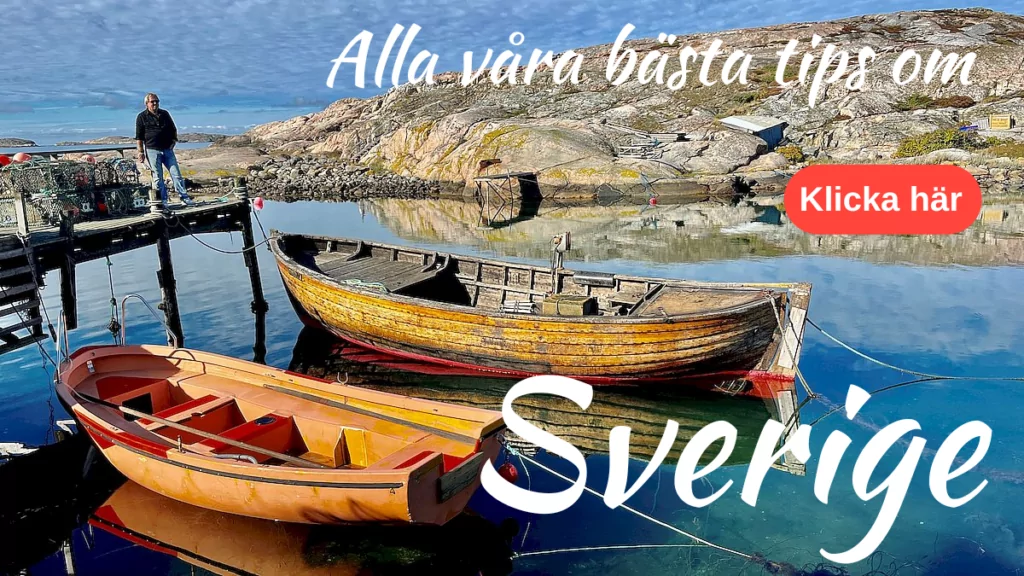










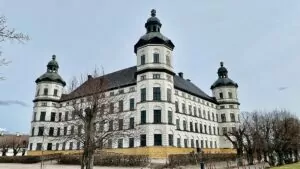















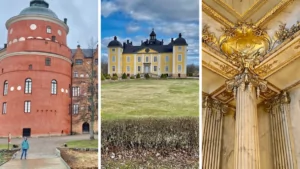















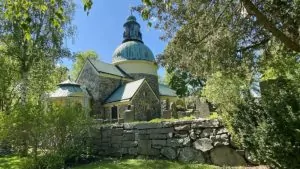










bmlarstravellingblog says:
Another nice walk in a mill environment with an interesting history! (I shuddered when I saw the map. There is a Gustavsberg not far from Falköping too. We had no idea about that...)
02 May 2020 - 8:09
Helena says:
Good morning! What do you mean you jumped when you saw the map? You mean you saw the wrong Gustavsberg? I've been there before. When I set "Ella" in Sri Lanka, I saw Ella in Sri Lanka, but my mum saw Ella in Täby ... That time it was possible to change it by more specifically entering "Ella, Sri Lanka" in the Google Maps settings. Now I have written "Gustavsberg, Stockholm" in the settings. Does that make it better? (If that's what you meant, I'm not sure...)
02 May 2020 - 8:18
bmlarstravellingblog says:
Didn't know it could be like that!
Now we also see Gustavsberg, Stockholm when we read the post.
Anyway, we had a nice guided tour in an environment that was completely unknown to us. Thank you for it!
02 May 2020 - 9:36
Helena says:
Ok, fine! Now I know that I need to be clearer in the settings if there can be several places with the same name (and that's not uncommon!). Thanks for letting me know!
02 May 2020 - 19:42
Lena - good for the soul says:
It was a slightly different "walking tour" compared to the ones you've done recently, but still plenty to see. I didn't realise there was so much in the area. I have been there once ... hmm, it may have been a fair. Recognised a house in one of your pictures.
Have a nice Saturday!
Hug Lena
02 May 2020 - 8:27
Helena says:
Yes, we like to vary, so we will probably try to alternate nature with a bit of culture and history sometimes 🙂.
02 May 2020 - 8:37
Annika Gustafsson says:
I moved to Gustavsberg five years ago, and as a recent retiree, I see that there is a lot to explore.
Thanks for the tips ?
Regards
Annika
02 May 2020 - 8:59
Helena says:
What a beautiful place you have moved to! I'm glad we could contribute with tips! I'm sure there's even more that we don't know about.
02 May 2020 - 19:37
Ama de casa says:
What a nice tour with history and culture! 🙂
I like those "marked out" walks that give you help on the way (or rather help on the airing 😉 ) in new environments 🙂 ).
02 May 2020 - 10:12
Helena says:
Isn't that right? Right now I'm guessing you're happy for all the walks, marked out or not 😉 Happy Freedom!
02 May 2020 - 19:43
Ditte says:
What a nice excursion! And a trip to Gustavsberg is always nice. If you do not have a car, it is easy to take a boat trip here with Strömma and usually also the bus. (Now we will not go by bus ...) Have been out here quite a lot, especially during the years my parents had a summer house on Värmdö. Perfect excursion destination. We have probably walked about 2/3 of the walk and may take the rest on our next visit. On the other hand, we can gladly take the whole.
Thanks for a nice walk, nice pictures and good info.
02 May 2020 - 13:25
Helena says:
Then I can understand that you have spent a lot of time here! Quite right to be careful in these times. We also avoid buses and trains. For us it will be car or bike, and only outdoor activities within the county.
02 May 2020 - 19:45
Lena in Wales and Spain says:
Nice report from Gustavsberg which I have visited, but now realise that I have only seen a small part of the harbour and the shops there.
Can't remember the sign across the road saying Gustavsberg Harbour.
We had the little grandchildren with us, so we were probably watching them as much as the neighbourhood.
Thanks for the nice report and have a nice weekend!
02 May 2020 - 14:53
Helena says:
Funny that you have been here! When you have children, it is impossible to have full focus on everything else, I recognise that!
02 May 2020 - 19:46
BP says:
We did a similar "pleasure trip" to Gustavsberg two years ago. Great fun to repeat the walk and get info about all the buildings now from you:-)
02 May 2020 - 20:28
Mr Mats Björkman says:
Nice travel description of Gustavsberg. A few minor factual errors, however: The inn was built as early as 1860 and Runda Huset's well-known functionalist architect Olof "Thun-Olle" Thunström is also behind the residential areas Höjdhagen, Grindstugärde and Hästhagen.
30 November 2020 - 18:06